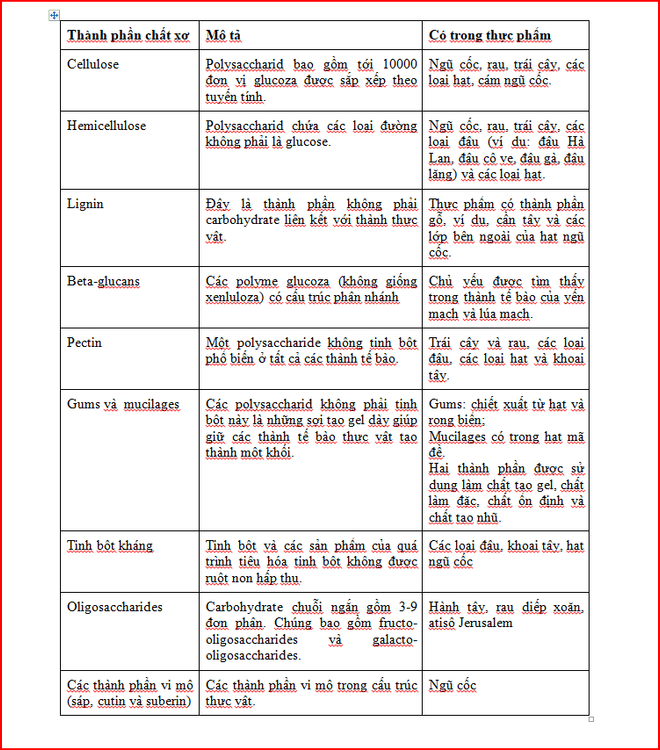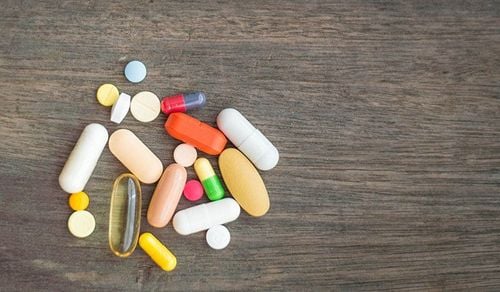This is an automatically translated article.
Fiber is found in whole grain foods like bread, beans, lentils, fruits and vegetables. This substance is not broken down by human digestive enzymes. The average recommended intake for adults is 30g per day. Eating less fiber has been linked to constipation and some intestinal diseases such as bowel cancer. High-fiber foods can help lower cholesterol, reduce the risk of diabetes, and fight obesity.
1. What is fiber?
Fiber was once known as 'roughage' and refers to a group of substances in plant foods that cannot be fully broken down by human digestive enzymes, including waxes, lignins and polysaccharides such as cellulose and pectin.
Originally it was thought that fiber was completely indigestible and did not provide energy. It is now known that some fibers can be fermented in the large intestine by intestinal bacteria, producing fatty acids and short-chain gases (methane, hydrogen and carbon dioxide). Fatty acids are absorbed into the bloodstream and provide small amounts of energy. The amount of gas produced depends on the type of fiber eaten and the type of bacteria present in the intestinal tract. After increasing the amount of fiber in the diet, some people experience symptoms such as bloating and discomfort. However, the large intestine and gut bacteria gradually adapt to the increased intake, and these symptoms usually subside.

Chất xơ có trong thực phẩm ngũ cốc như bánh mì, đậu, đậu lăng, trái cây và rau
2. Fiber Recommendations
In 2015, the Government's Scientific Advisory Committee on Nutrition (SCAN) recommended increasing the population's fiber intake to an average of 30g per day for adults. The previous recommendation equated to 23-24g of fiber/day and no age group in the UK has achieved this; The average adult intake is about 18g of fiber. Socio-economic disparities exist with less food intake in the lowest income quintile than in the highest quintile, across all age groups and in both sexes. Similar trends are evident in fruit and vegetable consumption, which may partly explain these findings.
For children, the recommended amount of fiber is: 15g/day (2-5 years old); 20g/day (5-11 years old); 25g/day (11-16 years old); 30g/day (16-18 years old). These recommendations have been rounded to the nearest 5g.
The Government Scientific Advisory Committee on Nutrition has expanded the definition of dietary fiber to include not only non-starch polysaccharides but also non-digestible, resistant starch oligosaccharides and polydextrose, as there is now evidence for similar beneficial physiological effects (eg, increased stool mass, decreased intestinal transit time and constipation, or decreased total and LDL-cholesterol) compared to those proven for the natural integrated fiber components of foods (as opposed to synthetic natural extracts. Thus, the new definition for fiber (commonly referred to as AOAC fiber) includes all carbohydrates that are neither digested nor absorbed in the small intestine and have a degree of polymerization of three or more monomer units, plus lignin. In different proportions of foods containing fiber and with different properties, it is important to eat a variety of foods that contain fiber. lint. Here are some examples of the ingredients in fiber and the food sources listed below:


Chất xơ trong thực phẩm đã được chứng minh là cải thiện việc kiểm soát đường huyết
3. Is it good to eat a lot of fiber?
3.1 Fiber and Digestive Health Low-fermentable sources of fiber can act as a laxative and help prevent constipation. For fiber to have the best effect of preventing constipation, it is necessary to increase fiber intake along with increasing water intake. Some oligosaccharides (a type of fiber with a shorter carbon chain length) can be fermented by gut bacteria and may have beneficial effects on the gut microbiota.
Eating a low-fiber diet has been linked to diverticulitis (where the intestinal wall becomes inflamed and eventually damaged) and bowel cancer (rectal cancer). Evidence has shown a protective effect of eating a high-fiber diet on diverticulitis and rectal cancer.
3.2 Fiber and heart health
Some fermentable fiber eaten in large amounts can help lower blood cholesterol. Diets high in fermentable fiber, such as fruits and whole grains, and especially oats, have been shown to lower low-density lipoprotein (LDL) cholesterol.
3.3 Fiber and type 2 diabetes
Dietary fiber has been shown to improve glycemic control and has an important role in diabetes management.
Studies show that eating more fiber reduces the risk of developing type 2 diabetes. There is also specific evidence that a higher intake of fiber from whole grains and whole grains is associated with a lower incidence of type 2 diabetes.
3.4 Balance fiber and energy
Foods rich in nutrients Fibers tend to have high mass and low energy density. These foods can help reduce hunger and promote satiety, thus playing certain roles in energy balance control. Therefore, increasing fiber intake can help reduce other food intake and reduce fat intake. However, the available studies to date have been inconsistent and cannot draw firm conclusions about a beneficial association between dietary fiber intake and changes in body weight.
Please dial HOTLINE for more information or register for an appointment HERE. Download MyVinmec app to make appointments faster and to manage your bookings easily.
Reference source: nutrition.org.uk












